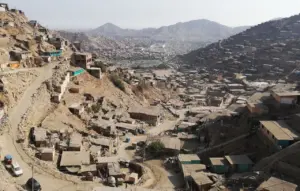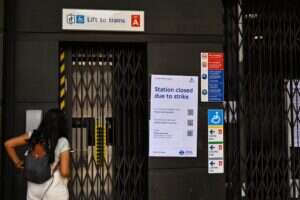I’ve always had a fascination with streets. Maybe it’s the sense of the unknown, the idea that despite the seeming uniformity there lays a different story behind every door, as its inhabitants go about their day-to-day lives within paved communities. Even as I write this, looking out the window at the sleepy suburban streets of London, there is a sense of shared intimacy in the private routines of these strangers.
So when I recently came across an old faded book on my home town, I was intrigued by its confidently asserted title: “THE TOWN WITH NO STREETS”. After reading this study of rural urban life, which, as the title would suggest, explained that the Northern Irish town I grew up in has no streets, a quick Google search revealed that the City of London, although full of streets, had historically – and largely due to a technicality – no roads. While the boundary changes of 1994 mean that this is no longer the case, it did capture my attention. What was it about these open spaces that provides such an insight into cities such as London? And how do streets differ to roads or avenues?
The answer, it turns out, lies in their purpose. While avenues are typically grander and wider, often being lined by trees and leading to an architectural feature, and roads represent travel from one place to another, streets are defined by their emphasis on the urban. Typically, they are a public space lined by buildings, which is traditionally a site of interaction. We may owe the road system to the Romans, but the Great Fire of London means that a large proportion of the city’s streets are predominantly modern developments, as the former network of narrow lanes and alleyways were gradually replaced. With London’s population surging from around 750,000 in 1760 to nearly 1.4 million by 1815, the Victorian period saw many of these streets paved with wood in order to reduce the noise from granite pavements, which local street vendors blamed for their dwindling custom. While only a few of these original wooden blocks remain today, some can still be found on Chequer Street, Islington.
Streets also reflected the social conditions of the class system. As early as 1712, Joseph Addison had commented in The Spectator that various parts of the city were becoming different nations. One of the most significant statistical, although by no means flawless, examples of this change was the work of Charles Booth, who in 1886 started his project of visiting every street in London to record its social conditions. In his work Life and Labour of the People in London, Booth created a system which organised London households into groups or classes. Through this colour-coding, he was able to create detailed maps of London. A parallel of such work today can be noted in new projects such as the geographer Oliver O’Brien (UCL Consumer Data Research Centre) and his map of London’s ethnic diversity.
One way in which this has been captured over the past two hundred years is through the work of street photography, aided by the arrival of the first Kodak camera in 1888. In 1876, John Thomson and the writer Adolphe Smith attempted to photograph the gritty reality of London streets in the magazine Street Life in London. By the twentieth century, publications such as Picture Post also allowed for alternative stories to be told. Picture Post’s photographer Thurston Hopkins was among those capturing candid shots of Jamaican immigrants as they sought to make a new life for themselves in London, after arriving on the Empire Windrush passenger ship in 1948.
Increasingly, modern understandings of the street have come to reflect a more politicised function. An emphasis on the street as a kind of pedestrianised community has resulted in the creation of movements such as ‘Reclaim the Streets’ – a collective which uses public spaces as a form of resistance against the corporate nature of globalisation. As local identity continues to be redefined, this has enabled the street to become a site of activism, where the global can be reimagined within the local.
The street continues to evolve as well as fascinate. Only in December, there was an event at the Bishopsgate Institute exploring the history of London’s street photography. As a site of urban innovation and reflection of everyday life, it’s clear the street is a thriving entity in its own right.






